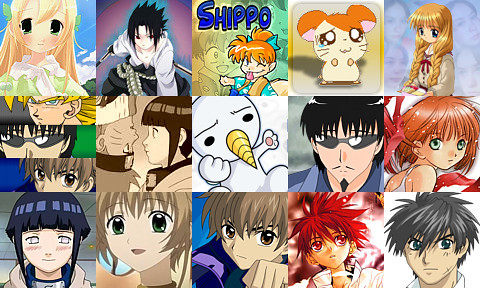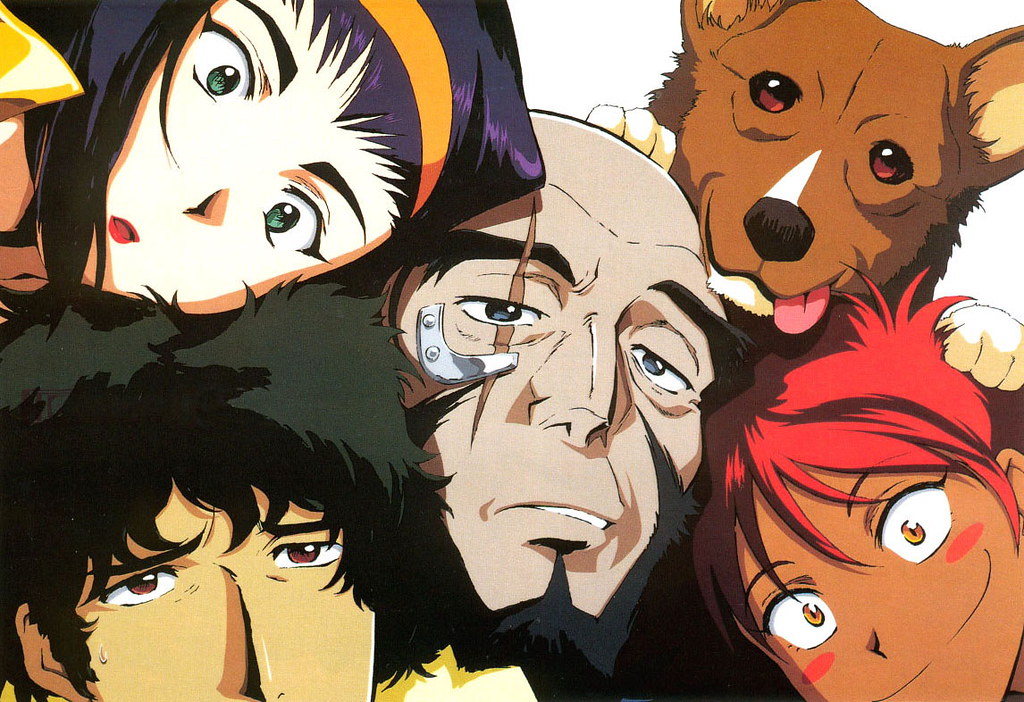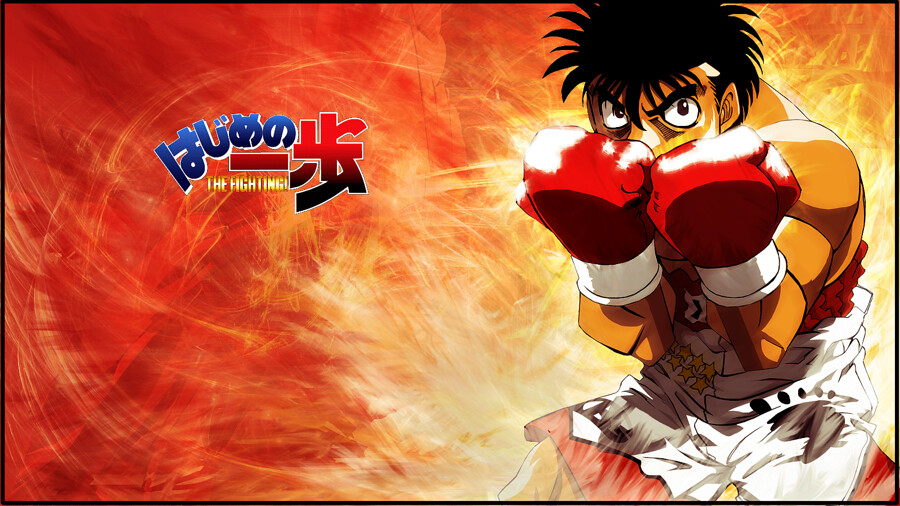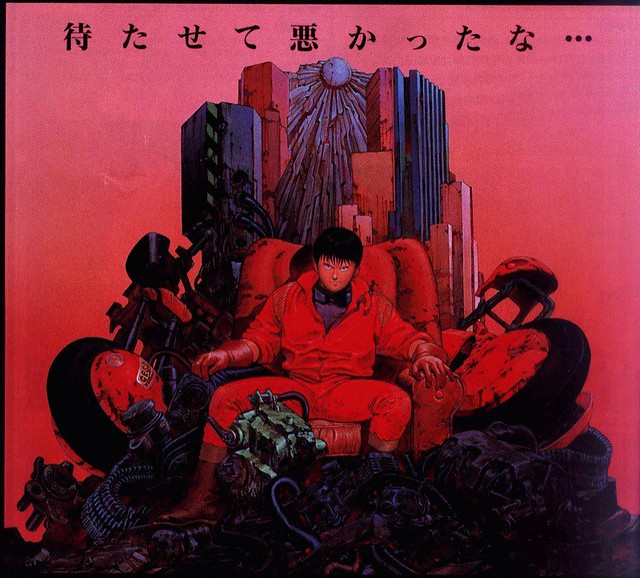(WARNING: major spoilers ahoy)
Meet Endeavor
But every so often, one of these peddlers of physical might comes along and provides a rare, in-depth examination of a touchy subject not often looked at in a world stuffed with friendship power-ups and well-defined heroes and villains. My Hero Academia, one of the most lauded modern shonen today, is one I've discussed before. Kohei Horikoshi’s story of a young boy named Izuku Midoriya who strives to become a hero despite being one of the few born in his world without an superpower, or “Quirk,” has enamored fans the world over with its endearing characters and surprisingly astute deconstructive observations despite keeping an upbeat and optimistic tone. But there is one character who could be called anything BUT endearing. In this world, where superheroes are such an everyday presence that the public ranks them according to their prowess, few match the power and effectiveness of Enji Todoroki, aka “Endeavor,” the No. 2 ranked hero in the world and father of important main cast member Shouto Todoroki. As bearer of a powerful flame-based quirk called “Hellfire,” Endeavor has saved hundreds if not thousands of lives over the course of his career. He is also, to put it lightly, a colossal tool to the third degree, rude and dismissive towards everyone, and driven as much by pride and envy of No. 1 hero All Might as by the desire to help the citizens who rely on him.
But what really fixed Endeavor in the fandom’s eternal ire concerns how he treats his family. His marriage to Shouto’s mother Rei seemed transactional to begin with, geared towards producing a worthy heir, which after three tries he finally found with Shouto. His older children, deemed “failures,” lived in isolation from their little brother, neglected by Enji as he focused his attention to “training” (read: kicking the crap out of) his prized achievement. And just to rain a few rotten cherries atop this unappetizing dessert, Rei sometimes got a face-full herself whenever she tried to protect Shouto. This led to her mental breakdown, culminating in a fit of blind rage which left Shouto scalded and permanently disfigured and landed her in a mental recovery hospital. And all the while, Endeavor played the part of the pivotal patriarch, blind to the tremendous damage he’s done to his family, devoting his life to one aim: surpassing All Might, one way or another.
Endeavor’s characterization earned him considerable hate, but also a fair number of fans drawn to his cool design, undeniable badassery, and his status as a nominal hero among a top flight of generally clean paragons. For a good few readers unable to draw the line between “evil” and “asshole,” Endeavor is held up as a great villain himself, to the point that many fans anticipated a showdown between him and other heroes down the line.
Character Growth and Its Discontents
And then, dimensionality struck.
After All Might expends the last of his power in an epic fight and steps down as the world’s top hero, Endeavor gets kicked upstairs as the new big dog — which, since it was given to him rather than earned, royally pisses him off. What’s more, years of playing the effective but aloof and vicious anti-hero has — surprise! — left him with an in-universe hatedom to match his fandom; instead of a “Symbol of Peace” like his predecessor, he’s a symbol of division and, in some quarters, scorn. He comes to realize that all his actions over the past decade or two have amounted to nothing, and with this heightened perspective comes a recognition of the wreckage his hurricane of abuse has left in his own home, and it leaves a bitter taste.
For the fans, it was like: goodbye villainous aspirations, hello redemption arc. And many of them loathe it.
Horikoshi received considerable backlash for even attempting to conduct a redemption arc with the character, with some fans even issuing veiled death threats over tumblr. Others already dismissed it as “terrible” or “poorly-written” before it even began in earnest. This vitriol leaves me scratching my head, as it should any rational observer. As a lover of good (key word here) redemption arcs, I welcome any attempt to have a character change themselves for the better; as a reader and a critic, I’m impressed with Horikoshi’s surprisingly nuanced and sensitive handling of the subject, certainly compared to other shonen anime (looking right at you, Naruto). And yet despite the skillful way MHA handles this potential land mine, many fans remain bitterly divisive, still shrieking their discontent at even the attempt of letting Endeavor change, or better yet, saying that he doesn’t "deserve" a redemption arc due to the supposed severity of his past actions.
The Question of Why
All of this vexes me by its profound illogic. The truth is that the world both in and out of shonen manga is no stranger to unlikely redemption stories; many of history’s most renowned saints started their lives as notorious sinners, and there’s no end of manga bad boys (and girls) who turn a new leaf after a series of nefarious crimes. And while some of these turns fall prey to some seriously sloppy writing, few have inspired quite the visceral reaction (and death threats) as Endeavor. It looks all the more puzzling since Enji’s crimes, taken objectively, look paltry on the grand scale. While some clamor for the redemption of characters like Dabi, a notorious flame-based serial killer who shows no remorse for his actions at all, Endeavor — who to our knowledge has murdered no one, has saved many, and whose gravest crime is non lethal abuse to a handful of people — gets tossed to the fire by a large portion of the fandom. While my initial reaction may be to call out the hypocrisy of this, further reflection helps place an understanding of these reactions into their proper context — and why despite that, Enji’s redemption arc is a worthy venture to get behind.
Close to Home
One thing consistent with the responses to this development, both for and against, is how many people bring their personal experiences to the fore in any discussion of Endeavor. This lies at the root of why a hero whose biggest crime amounts to everyday douchebaggery can earn less sympathy than, say, an unreformed mass murderer; few people are unfortunate enough to run into a real life serial killer, but far too many have the specter of an abusive relative lurking in their closets. This helps create a divide between extreme cruelty and our empathy with its victims. In addition, Endeavor’s victims are more intimately known to us: Shouto, a major character and a prime filter through which we perceive his father; his sister, Fuyumi, who seems most willing to forgive Enji but mostly wants some semblance of a happy family; their brother Natsuo, who hates their father with a passion and is resolved to never forgive him no matter what; and of course, Rei, who despite bearing the brunt of Enji’s abuse along with Shouto which eventually claimed his face and her freedom, looks willing to give forgiveness a try, even if the thought of facing her husband again terrifies her. All four of these characters are known to us, their motives and concerns made “real” by their narrative focus, unlike the scores of faceless victims behind the story’s real antagonists. Now, there’s a ton of interesting psychology behind this (and frankly, it reveals some scary things about our capacity for empathy) but they all revolve around the fact that the struggles of a small group of known people, in relatable circumstances, will always trump the welfare of a huge swath of strangers, no matter how awful their suffering. The easy disconnect fiction brings to the table doesn’t help the empathy score, either. Now, this is by no means rational, let alone ethical, but it is understandable.
Redemption Is Not What You Think It Is
Furthermore, our punitive outlook when it comes to the riddle of retribution often leaves us confused when faced with an arc like this. Some fans protest against Enji’s new turn on the grounds that he doesn’t “deserve” redemption, or that it’s too easy an out for his crimes, which is utterly ridiculous. Redemption — or rehabilitation, if you prefer — is by definition the act of restoring, of making right. Redemption occurs simply when a character realizes “I done f***ed up,” and trudges down the difficult path of atonement. Fans likely oppose this so fervently because they confuse atonement with forgiveness. Atonement is an action on the part of the one who has wronged, and in that respect, no one can tell him or her they have no “right” to it; that’s completely their choice. Forgiveness, on the other hands, rests with those they have wronged — in this case, Enji’s family. The boundary between a mature or immature redemption arc falls on how clearly the writer draws this distinction; having everyone suddenly forgive a character who has done great evil to a good many people breaks realism and leaves attentive fans deeply unsatisfied. And again, Horikoshi sets himself above the competition in how he handles this most delicate of topics, showing that there is no right or wrong way to forgive one’s abuser. In the latest rung of Enji’s turn to good, his family remains divided, with some willing to forgive, others beyond the point of any forgiveness, and Shouto stuck in the middle, respecting his father’s skills and wanting to let go of his hatred, but justifiably skeptical over whether Enji’s change of heart will stick. Enji, reading the atmosphere, comes to a very reasonable solution for them all: he will not seek forgiveness, and instead wish only to atone from afar, letting his family heal while he takes himself out of the picture. Such a mature reckoning should be lauded, especially coming from the pen of a “mere” shonen mangaka, and in fact, gets me thinking that if anyone in the medium has shown the attitude which merits forgiveness, it’s Enji.
The Bakugo Effect
I can’t leave this topic without kicking another fandom powder keg, one that’s only been agitated further by Endeavor’s redemption arc. Enji at this point often gets compared to another character in MHA — Katsuki Bakugo, the series’s deuteragonist. Bakugo, a volatile, hot-headed punk with a powerful explosion Quirk and a superiority complex, follows a similar narrative trajectory to Enji: both got introduced as arrogant, violent, nominal heroes at best; both abused and tormented main characters (Enji to Shouto, while Bakugo bullied Midoriya for years); and both were hated by a fair portion of the fandom for their demeanor and actions. And both have since revealed more complex and engaging depths to their characters, and in their owns ways are clawing towards redemption of a sort. The key difference, Endeavor fans keenly point out, is that Enji has actually apologized for his past actions, admitted his wrong doing, and has made a conscious effort to change and repair. Bakugo, though considerably mellowed compared to his introduction and learning to channel his anger constructively, remains a loud, pushy jerk, rude and verbally abusive to everyone, and has yet to acknowledge let alone apologize for his past bullying to Midoriya, which besides physical beatings included effectively telling him to go kill himself — an action which could have legal repercussions in real life. And yet despite this, while Katsuki remains far from universally loved, he has gained tremendously in popularity since his character development, and gets consistent encouragement from fans for his growth, while these very same fans will dismiss any effort to “humanize” Enji. I’m a bit at a loss to decipher this; the characters are similar in the nature if not extent of their crimes, and Bakugo’s youth, while certainly a factor, gives no excuse.
It could simply be that we don’t have the right perspective to wrap our minds around characters like Enji and Bakugo. Both prove less controversial in their native land than here in the West, with Endeavor even ranking high in one recent popularity poll for his new leaf. Regardless, any attempt of a character to change for the better should be welcomed, especially if it leads from a writer with enough skill to treat the topic with respect. Horikoshi reveals redemption for what it is: messy, painful, and decidedly unheroic, but when handled well, speaks to a deep desire in all of us that by setting right what we have wronged, we can change ourselves and the world for the better, even if we never find forgiveness. I don’t know where this road will lead, but I wish Horikoshi and Enji all the luck they can muster.
They'll definitely need it.





